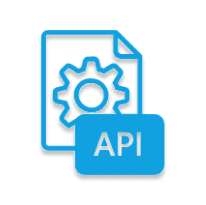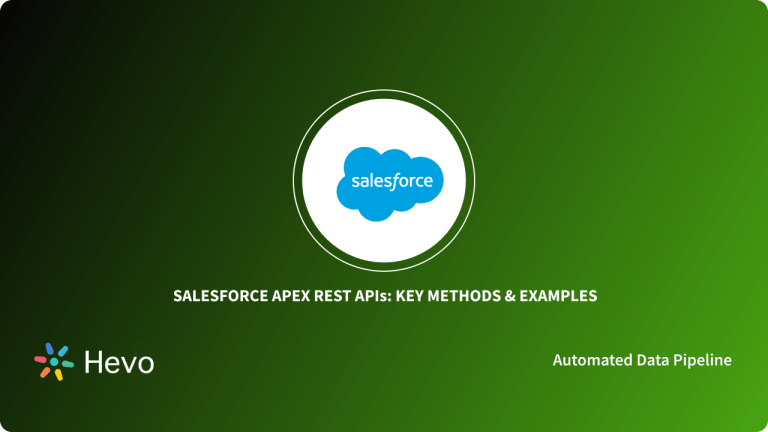Different Software Systems can behave better when combined. But how can two different Software Systems unify forces to communicate and exchange data in a coherent way? A number of standards and protocols have been discovered to facilitate communication between different systems. If you have ever explored these systems, you might have come across two popular technologies: OData and REST APIs.
These two are technologies used to facilitate communication and interaction between different Software Systems. Although the two are closely related, they are not the same. There are major and significant differences between the two technologies. In this OData vs REST APIs article, we will help you to know everything about these two technologies. We will answer questions like, “What is OData?” and “What is REST?”. We will then go deeper and discuss the differences between OData and REST
Table of Contents
Understanding the Concept of REST APIs
REST (REpresentational State Transfer) refers to a Software Architectural Style that defines the standards for exchanging information between two different systems via the HTTP Protocol. It is the most popular architecture for exchanging data on the World Wide Web.
REST defines 6 different principles for Web Services:
- Uniform Interface: All components in a REST system must adhere to the same interface and rules so as to communicate with each other.
- Client-Server: REST separates Servers from Clients. The Servers store information, while the Clients retrieve information from the Servers.
- Stateless: All requests made via REST are stateless. They have all the necessary information needed by the Server to execute the request.
- Cacheable: In REST, both Clients and Servers can cache resources, which is good for reducing traffic and improving performance.
- Layered System: REST supports a Layered System Architecture. The Client may communicate with one Server, while the other Servers perform tasks such as Data Storage and Authentication.
- Code on Demand: REST requisitions may return executable code or logic when necessary (optional).
Any API (Application Programming Interface) that follows the above principles is referred to as a REST API. In most cases, REST APIs use XML or JSON, but the REST Architecture doesn’t require anything specific as far as this is concerned. REST does not require any particular format, but it accepts any format that can be used in Content Negotiation.
Understanding the Concept of OData
OData (Open Data Protocol) is a set of best practices for developing and using RESTful APIs. It helps you to focus on your Business Logic while creating RESTful APIs without the need to worry about various ways to define request and response Headers, HTTP Methods, Status Codes, Media Types, URL Conventions, Payload Formats, and more.
OData carries the following specifications:
- It must follow REST principles unless there is a clear reason why it should not.
- The OData services MUST have support for Atom encoding.
- OData services SHOULD have support for JSON encoding.
REST is the most essential component technology of OData. OData 3.0 standards require OData users to follow REST principles. OData rests on HTML technology, which resolves the problem of being REST-based in a way. It supports two Protocols for Data Transfer, the XML-based Atom format and JSON.
OData also has guidance for performing actions like defining reusable procedures, tracking changes, and sending many REST requests.
It provides two models for Data Management which include:
- Entity Data Model (EDM): This is an abstract Data Model that OData users MUST use to describe the exposed data.
- Service Model: It is made up of Static Resources and a set of Dynamic Resources. The work of the Static Resources is to provide a way of asking the Service about its Data Model, while the Dynamic Resources provide methods to manage the Data Model.
In the next section, we will be discussing OData vs REST APIs to know how the two compare in different core areas.
Unlock the full potential of your Rest API data by using Hevo for integration. Within minutes, you can seamlessly connect to your chosen destination, automating your data workflows and gaining real-time insights.
Why Integrate with Hevo?
- Automated Data Sync: Automatically transfer data from Rest APIs to your preferred destinations without manual intervention.
- Real-Time Data Flow: Keep your financial data up-to-date and consistent across all platforms.
- No-Code Platform: With Hevo’s intuitive interface, you can easily set up and manage your data pipeline with no technical skills required.
Join 2000+ Happy Customers
Industry leaders such as Thoughtspot trust Hevo for its reliable data integration solutions.
OData vs REST APIs: What’s the Difference?
Let’s now discuss how OData and REST APIs compare to each other:
1. Function
REST Function
REST is an architecture that defines how to send messages between a Client and a Server via HTTP. It is a model that states that you can use HTTP and its verbs to perform CRUD Operations (Create, Read, Update, Delete) on the resources exposed by your Services. Thus, REST is more concerned about the architecture.
OData Function
OData is a standard from Microsoft that relies on the REST Architecture to send specific types of messages over HTTP. It defines metadata in CSDL (Common Schema Definition Language) format to describe the Entity types supported by your Service and their Properties, Data types, and more. Thus, OData is more concerned about the content.
2. Principles
REST Principles
REST defines 6 principles, as has been listed above, to ensure the creation of efficient Web Services and REST APIs must follow these principles. These principles ensure the success of REST Projects.
OData Principles
OData is built on top of the REST Framework, thus, it depends on REST principles. Note that even though OData recommends its users to follow REST principles every time, the requirement can be relaxed in the case of a good reason. A very basic, Compliant Service should be easy to build, with additional work necessary only to support additional capabilities.
3. Best Use Case
REST API Best Use Case
REST is used when there is a need to interact with a Data Source, for example, to retrieve data for all Products. It is easier and faster to parse data using REST APIs. It uses URI to expose the Business Logic.
The following operations are available on HTTP:
OData Best Use Case
OData is best used to expose Services and APIs to Systems and Applications. It has facilities for extension to achieve the custom needs of the REST APIs.
4. Data Transfer Format
REST Data Transfer Format
Data transfer format is an important factor to consider when comparing OData vs REST. REST supports the transfer of data in any format. Although most REST APIs use XML and JSON formats, REST is not specific in regard to this.
OData Data Transfer Format
OData API specifies that the data should be transferred in either JSON, XML, or Atom format.
Those were the major differences between OData vs REST.
Conclusion
This blog discussed fine differences across OData vs REST APIs. We also discussed concepts behind OData and REST APIs, their specifications and principles.
For Businesses, extracting complex data from a diverse set of Data Sources such as REST APIs can be a challenging task. This is where Hevo saves the day by providing an efficient, reliable and fast ETL Service.
Want to take Hevo for a spin? Sign Up for a 14-day free trial and experience the feature-rich Hevo suite first hand. You can also have a look at the unbeatable pricing that will help you choose the right plan for your business needs.
FAQs on OData vs REST APIs
1. Is OData a REST or SOAP service?
OData is a RESTful service protocol providing a standard way to query and manipulate data using HTTP.
2. What is OData used for?
OData is used for building and consuming RESTful APIs, enabling easy access and manipulation of data from various sources.
3. Does OData use HTTP?
Yes, OData uses HTTP for its communication protocol, leveraging standard HTTP methods like GET, POST, PUT, and DELETE.
4. Is OData better than REST?
OData is a specific implementation of REST, providing additional features like metadata, query capabilities, and data model standardization. Whether it is better depends on the use case and requirements.










